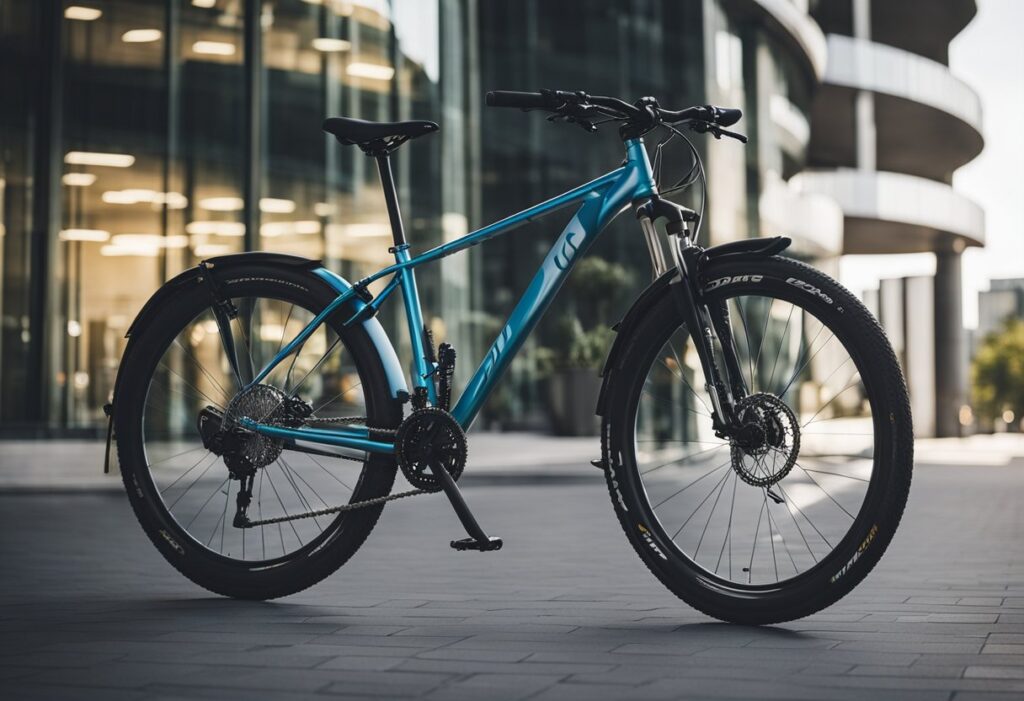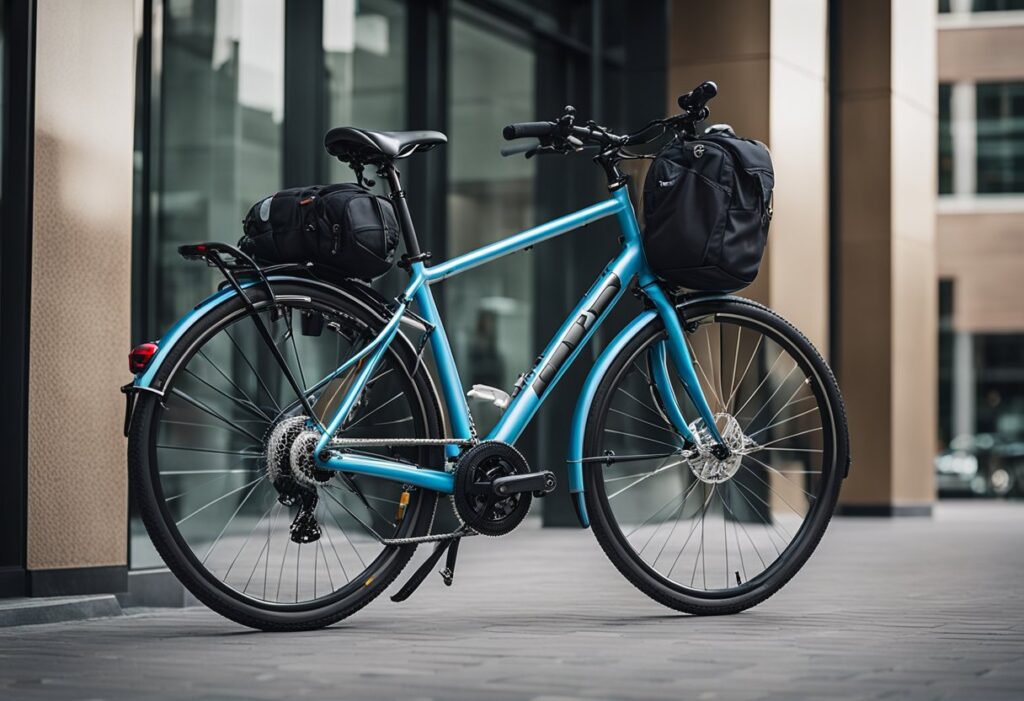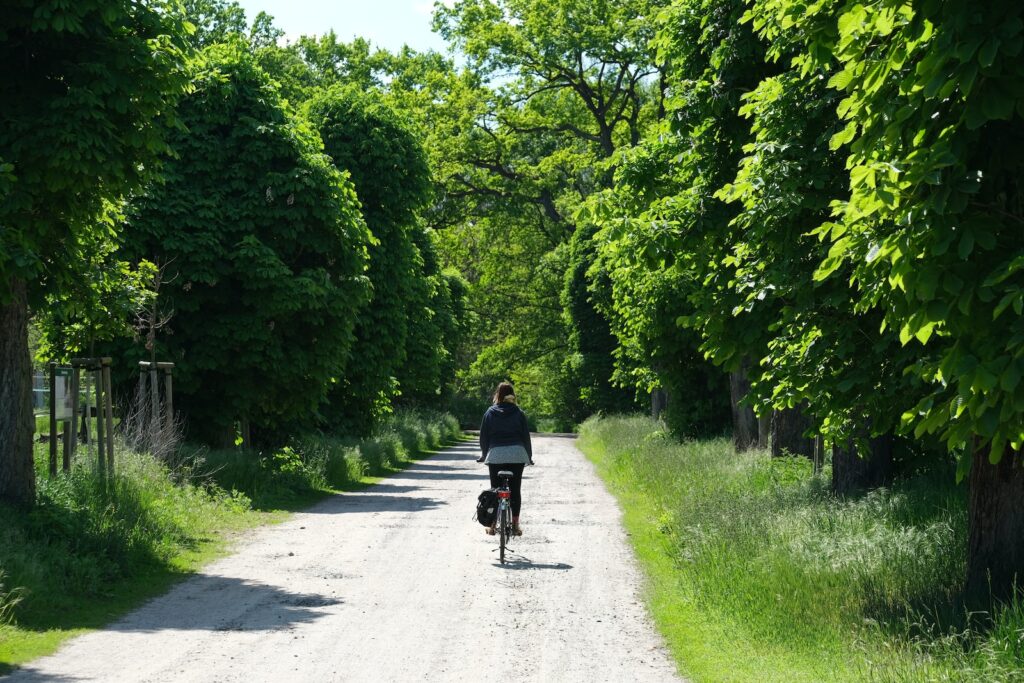Commuting to work can be a costly and time-consuming affair. With the rising costs of gas, parking, and vehicle maintenance, many people are looking for alternative modes of transportation. Cycling to work is one such option that has gained popularity in recent years. Not only is it a cost-effective way to commute, but it also offers numerous health benefits and helps reduce environmental pollution.

Cycling to work can save commuters a considerable amount of money. According to the American Automobile Association, the average American household spent in 2022 over $10,728 per year to own and operate a new car. By cycling to work, individuals can save on fuel, parking fees, and vehicle maintenance costs. Additionally, cycling is a low-impact form of exercise that can improve overall health and well-being.
Table of Contents
Cycling Cost Savings: Tangible Financial Benefits of Cycling
Cycling to work is not only an environmentally friendly mode of transportation, but it also offers a plethora of financial benefits. This section will explore some of the tangible financial benefits of cycling to work.
Savings on Gas and Public Transport
One of the most obvious financial benefits of biking to work is the savings on gas and public transport. As mentioned previously, the average cost of owning and operating a new car is around $10,728 per year or $894 per month. But the costs don’t stop at car ownership. For those relying on public transportation, the expenses can also be hefty.
In the USA, the average monthly expense for public transportation ranges from city to city. For instance, in New York City, a monthly MetroCard for unlimited rides on subways and non-express buses costs $127. In San Francisco, a Muni monthly pass runs for $81, while in Washington D.C., an unlimited monthly Metrorail pass can go up to $237, depending on the commuter’s travel distance.
When you combine these public transport costs with the ever-fluctuating prices of gas for those who drive, it’s clear that commuting by car or public transit can take a considerable toll on one’s wallet. By contrast, the ongoing costs associated with biking—such as maintenance and occasional equipment or part replacements—are typically much lower.
By biking to work, not only are individuals getting daily exercise and reducing their carbon footprint, but they are also sidestepping the hefty costs of gas and public transportation. Over time, these savings can accumulate, making a noticeable difference in one’s personal finances.
Reduced Wear and Tear on Vehicles
Biking to work can also help reduce the wear and tear on vehicles, which can lead to savings on maintenance and repair costs. Vehicles that are driven less frequently tend to have fewer mechanical problems, which can translate to significant cost savings over time.
According to the U.S. Department of Transportation’s Federal Highway Administration, the average American drives approximately 13,476 miles each year. Break this down, and one can see how quickly maintenance intervals, such as oil changes, tire replacements, and brake pad replacements, come around.
For every 10,000 miles driven:
- Oil changes, in modern vehicles, are often suggested every 7,500 to 10,000 miles, costing between $40 and $70, contingent on oil type and service provider.
- Tires, although they generally need replacement every 40,000 to 60,000 miles, can sustain damage or require rotation within 10,000 miles. A rotation service typically costs between $50 and $100 for all tires.
- Brake pads, depending on driving habits and conditions, have a lifespan ranging from 30,000 to 70,000 miles. If subjected to frequent stop-and-go traffic or aggressive driving, they might wear out faster. The cost for brake pad replacement can oscillate between $100 and $300 per axle.
Combining these regular maintenance costs with other periodic checks and unanticipated repairs, it’s estimated that car owners can spend around $792 annually, excluding major malfunctions.
By merely reducing yearly driven miles, cyclists can extend these maintenance periods and extend their vehicle’s component lifespan. For instance, if someone were to bike to work and reduce their annual driving by 3,000 miles, this could mean fewer oil changes over the years, decreased tire rotations, and extended brake longevity.
Lowered Insurance Premiums
In addition to savings on gas and maintenance costs, biking to work can also lead to lowered insurance premiums. Insurance companies often offer discounts to individuals who bike to work, as they are seen as lower-risk drivers.
Reduced Risk Equals Reduced Premiums
When someone chooses to bike to work, their car stays parked. This reduced time on the road translates to fewer opportunities to be involved in a motor vehicle accident. Insurance companies, always keen to manage their risk, often see cyclists who drive less as a more attractive proposition. This perspective makes sense when you consider that, according to the National Highway Traffic Safety Administration (NHTSA), 69% of car accidents occur within a short distance (10 miles) from home. By reducing short car trips in favor of biking, you’re statistically lowering your accident risk.
Incentives for Green Living
Insurance companies are increasingly acknowledging the benefits of green and sustainable lifestyles, including cycling. Recognizing the reduced risk associated with fewer miles driven, many insurers now offer discounts to policyholders who limit their vehicle use. For those who predominantly commute by bike and subsequently drive fewer miles annually, these discounts can range from 5% to 20% on their premiums.
Health Insurance Perks
Furthermore, it’s not just car insurance that sees potential savings. Health insurance providers have also begun recognizing the health benefits of regular cycling. An active lifestyle leads to fewer health issues, making cyclists less risky for health insurers. Consequently, some insurance providers offer benefits or premium discounts to individuals who maintain regular physical activity, such as cycling to work.
Savings on Parking
Parking fees can quickly become a financial burden, especially in bustling urban areas where every square foot comes at a premium. In many cities, commuters spend exorbitant amounts on daily or monthly parking passes. The cost, both direct and indirect, of parking can take a toll on one’s finances.
According to a report from Parkopedia’s 2022 Global Parking Index, the average monthly parking cost in New York City stood at about $604.66, while in cities like San Francisco and Boston, the average monthly fees were $323.61 and $388.47, respectively. When you break these figures down, it’s evident that drivers can spend thousands annually, just to have a place to park their vehicles during work hours.
When you factor in these potential expenses, the savings become even more substantial. Over a year, for instance, a commuter in New York City could save over $7,000 just on parking by opting to cycle. Even in cities where parking is somewhat cheaper, the savings are still noteworthy. Over time, these cost reductions can contribute significantly to one’s financial well-being, not to mention the environmental and health benefits of cycling.
Personal Cost Savings
Biking to work can also lead to personal cost savings, such as improved health and reduced healthcare costs. By incorporating physical activity into their daily routine, individuals can improve their overall health and reduce their risk of chronic diseases, which can lead to significant healthcare cost savings over time.
Economic Opportunities for Cities
Biking to work doesn’t just benefit individual cyclists; it can also significantly bolster a city’s economy. Cities that have chosen to embrace cycling culture and invest in bike-friendly infrastructure often reap substantial economic rewards.
Increased Retail Sales
According to the League of American Bicyclists, areas with bike lanes, especially those that connect residential and commercial districts, often see a boost in retail sales. This is attributed to the fact that cyclists tend to shop more locally than those who drive. A study in Portland, Oregon, found that, on average, cyclists spent 24% more per month in local businesses compared to drivers.
Job Creation
Investing in bike infrastructure doesn’t just make roads friendlier for two-wheelers. It also leads to the creation of jobs. Building and maintaining bike lanes, producing cycling amenities like bike racks, and developing cyclist-friendly urban planning initiatives all require labor. A study from Rutgers University highlighted that for every $1 million spent on bike infrastructure, up to 14 jobs were created, compared to just 7 jobs for the same amount spent on road-only projects.
Increased Property Values
Properties located near well-maintained bike paths and lanes often enjoy higher valuations. A study in Indianapolis found that homes within a half-mile of the city’s Cultural Trail, a bike and pedestrian pathway, saw an increase in property value by an average of 11% over a five-year period.
Tourism Boost
Cycling tourism has grown in popularity, and cities with good cycling infrastructure are magnets for tourists who prefer to explore on two wheels. Such visitors not only rent bikes but also spend money on accommodations, food, and local attractions. For instance, the Virginia Creeper Trail in Virginia draws approximately 250,000 visitors each year, contributing millions to the local economy.
Environmental Benefits and Indirect Savings

Biking to work not only saves money but also benefits the environment. Here are some of the environmental benefits and indirect savings of biking to work.
Reduction in Carbon Footprint
Biking to work stands out as an environmentally responsible commuting choice that substantially lessens one’s environmental impact. Data from the European Cyclists’ Federation indicates that a commuter who cycles 8 km to their workplace four times a week forgoes driving for an impressive 3220 km annually. This translates to conserving around 380 L of gasoline and preventing the release of 750 Kg of CO2 emissions each year.
By choosing to pedal instead of drive, individuals can directly contribute to cleaner air, decreased greenhouse gas emissions, and mitigation of climate change’s progression.
Less Congestion and Road Maintenance
Biking to work offers tangible benefits in tackling issues like traffic congestion and road wear and tear. By reducing the number of cars on the roads, we not only alleviate daily traffic jams but also decrease the strain on our infrastructure. This shift towards cycling not only translates to smoother commutes for everyone but can also lead to potential savings for local governments in terms of reduced road maintenance costs.
In addition, biking to work can help reduce noise pollution, which can have a positive impact on the quality of life in urban areas.
Impact on Existing Industries

Cycling can reduce the demand for vehicle maintenance and repair services. With fewer cars on the road, there is less wear and tear on roads and bridges, reducing the need for costly repairs. This can also reduce the need for parking lots and garages, freeing up valuable space for other uses.
Cycling can also have a positive impact on the manufacturing industry. With the growing demand for bicycles and cycling accessories, manufacturers have the opportunity to expand their product lines and create new jobs. In fact, the global bicycle market is expected to reach $28.66 billion by 2027, according to a report by Allied Market Research.
Furthermore, cycling can have a positive impact on the tourism industry. Cities that invest in cycling infrastructure often attract more tourists, who come to explore the city on two wheels. This can lead to increased spending on hotels, restaurants, and other local businesses.
Overall, the economic benefits of cycling extend beyond just the individual and the city. With the potential to create jobs, reduce demand for vehicle maintenance, and boost existing industries, investing in cycling infrastructure can have a positive impact on the economy as a whole.
Conclusion
In conclusion, biking to work presents remarkable economic benefits for individuals, businesses, and society. Opting for two wheels over four can slash personal transportation expenses, ease traffic congestion, and uplift local commerce.
While initial bike investments exist, the long-term savings are notable, coupled with health and productivity perks. While biking might not suit everyone due to distance, weather, or infrastructure challenges, it remains a sustainable, cost-effective choice for many seeking both personal and societal advantages.







